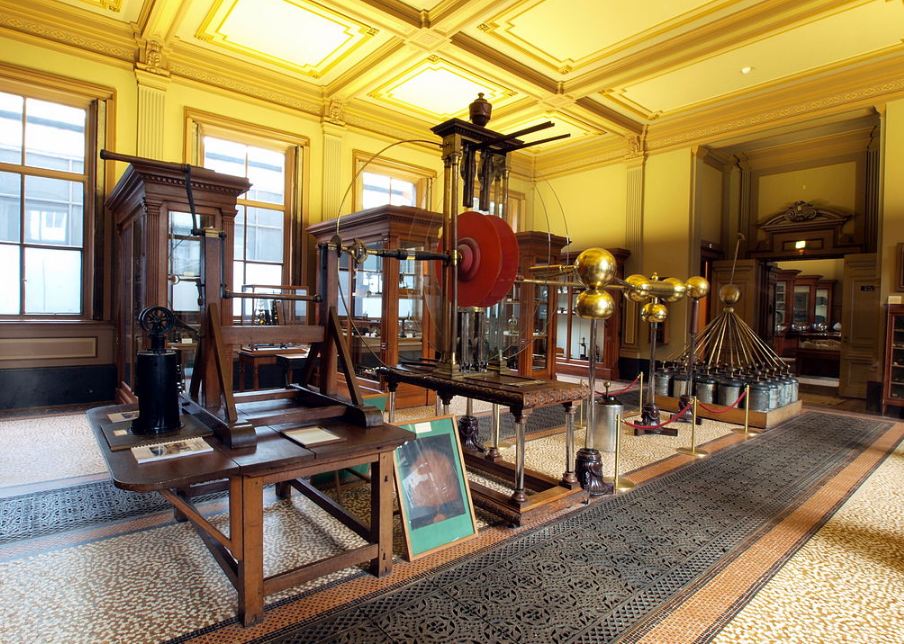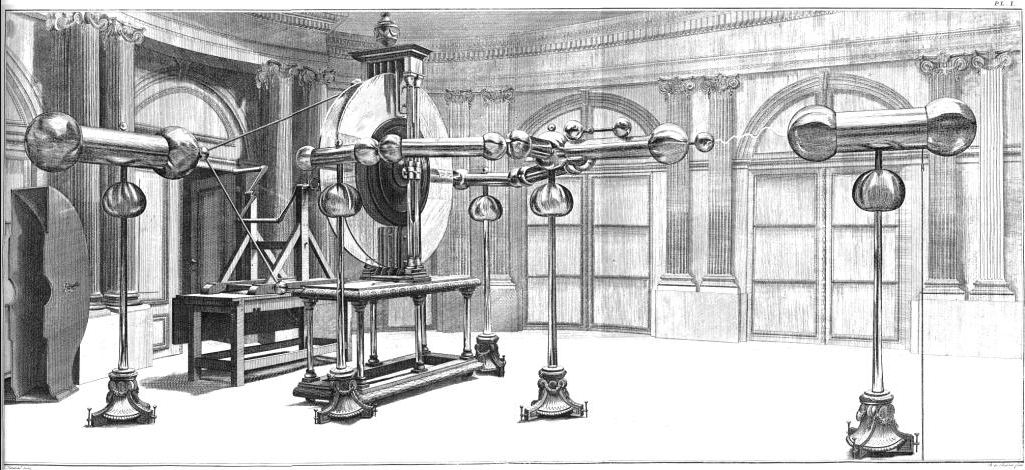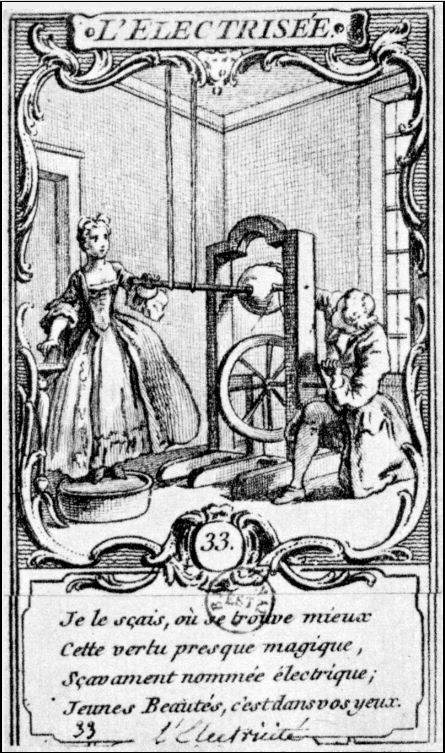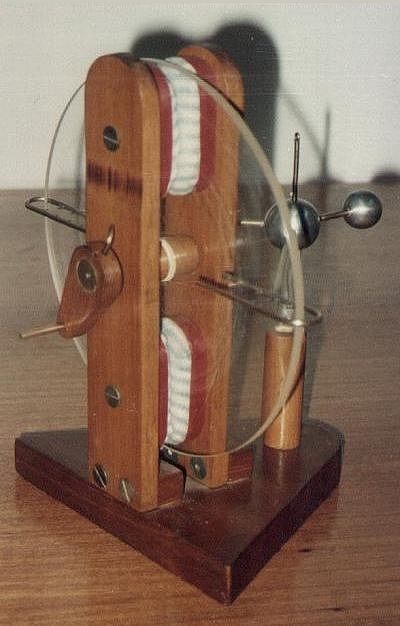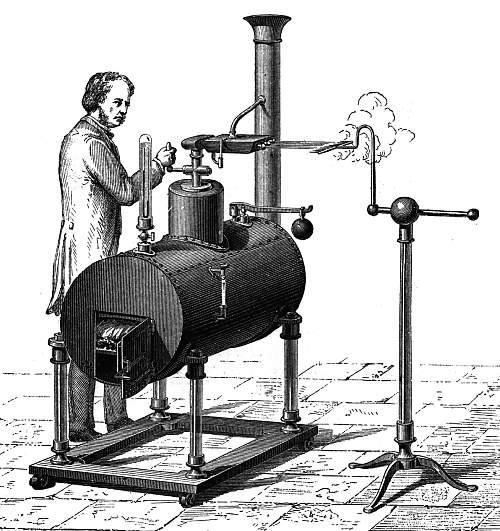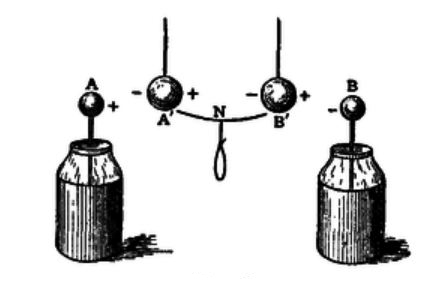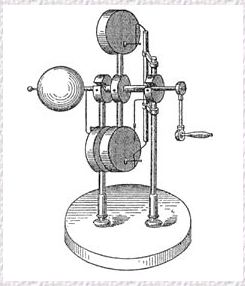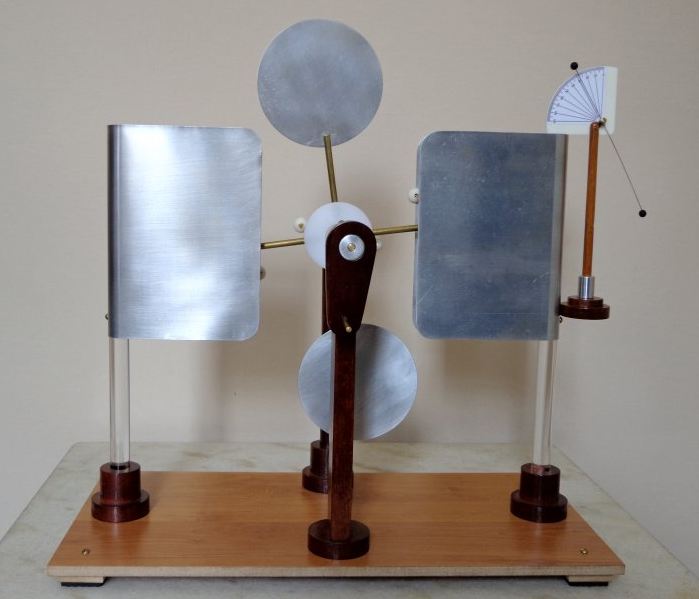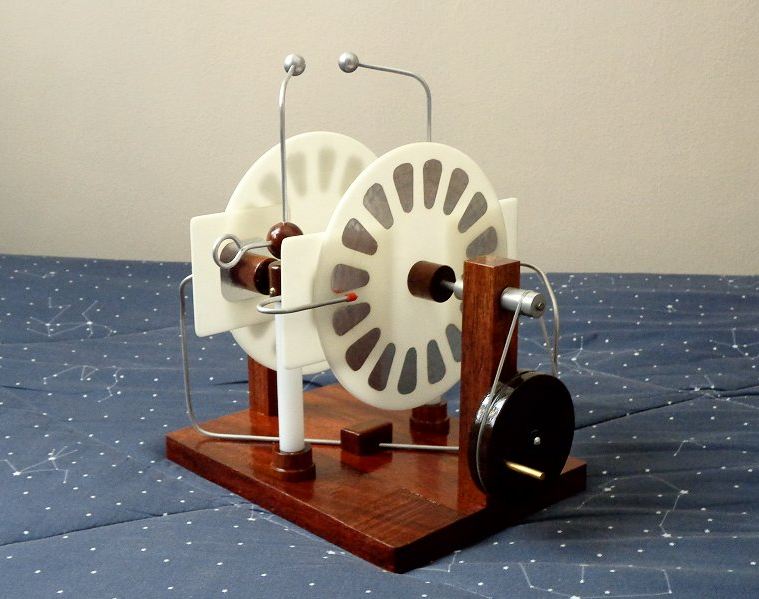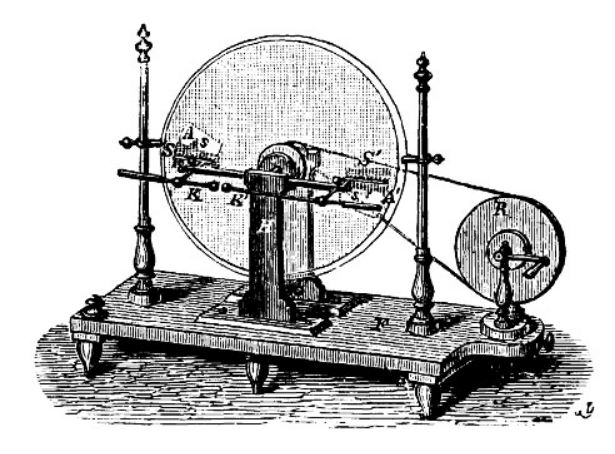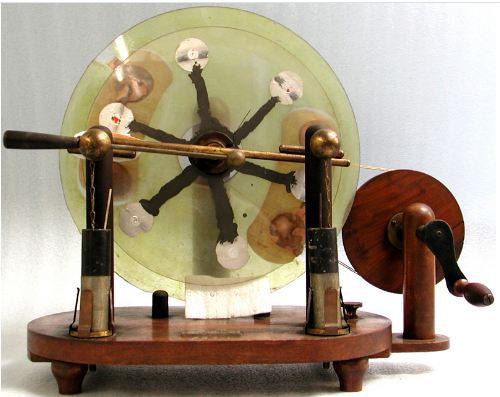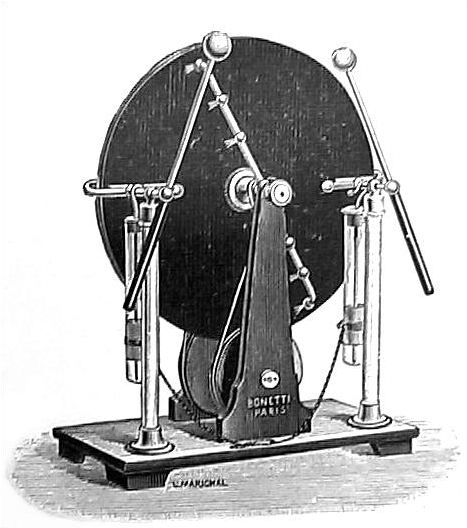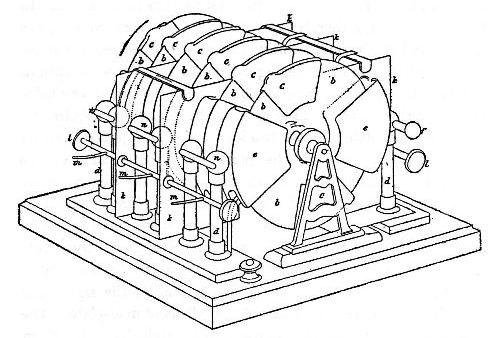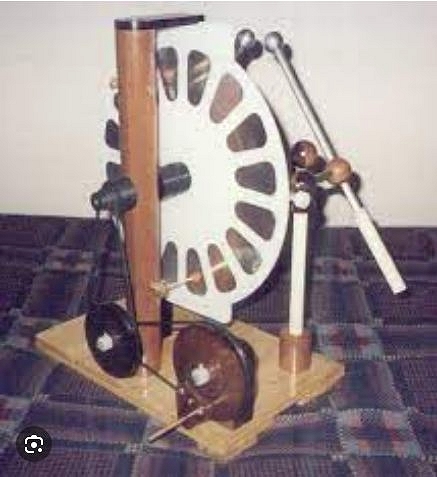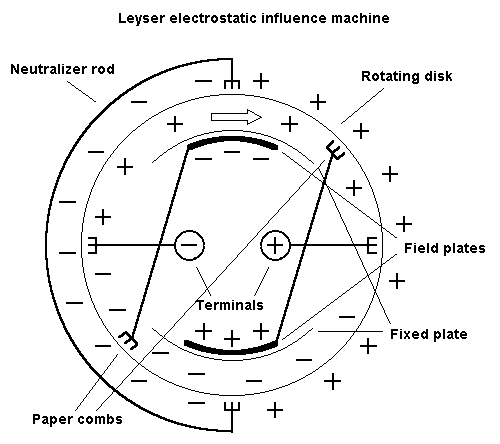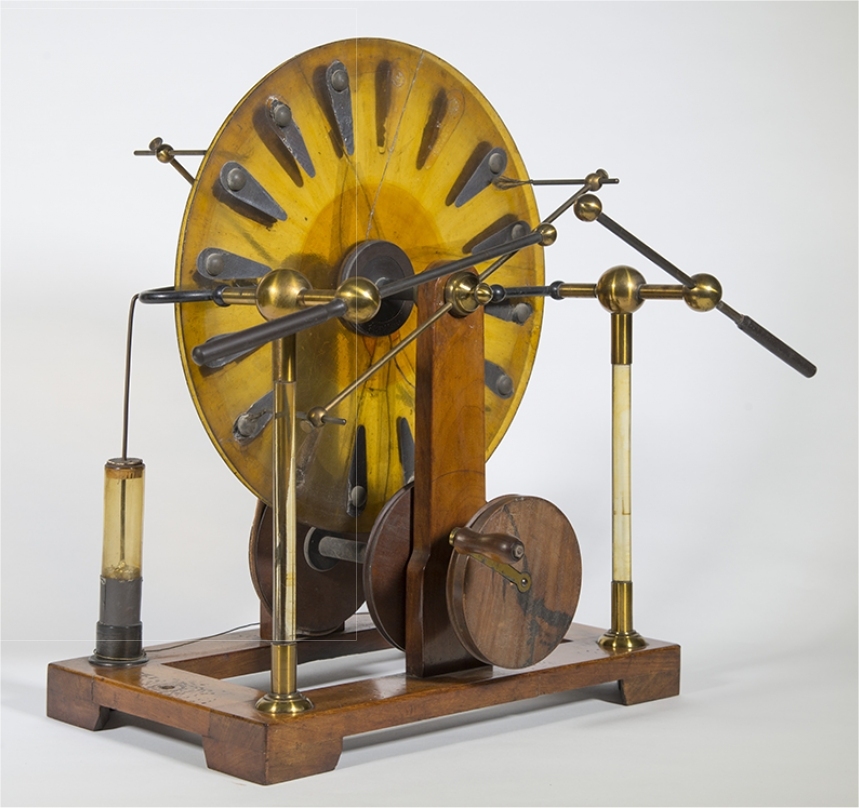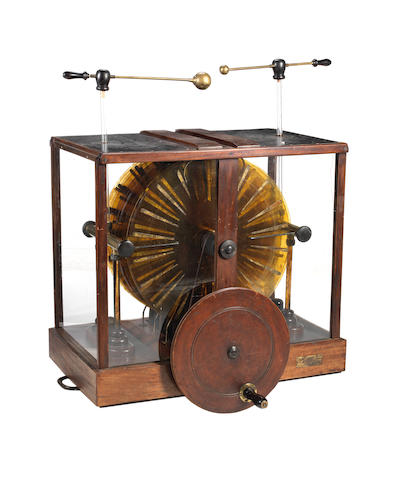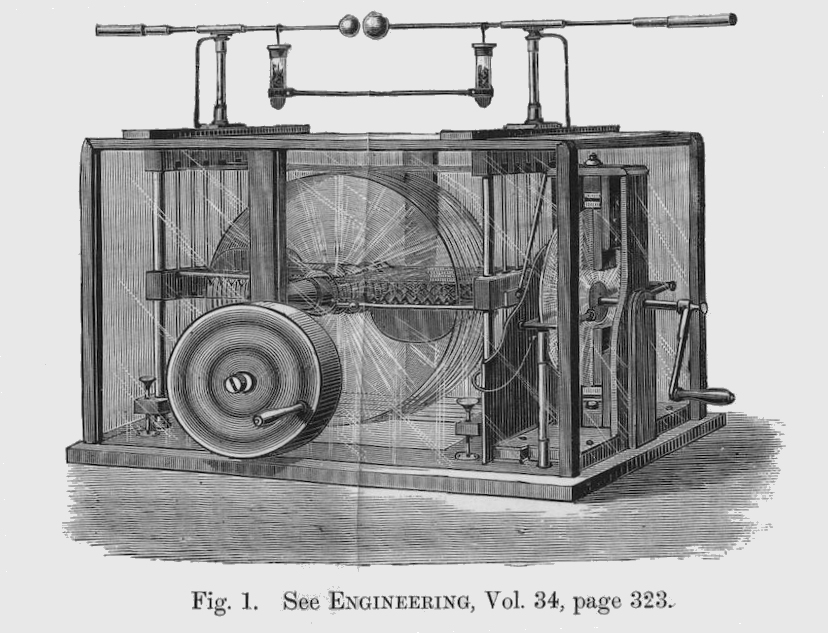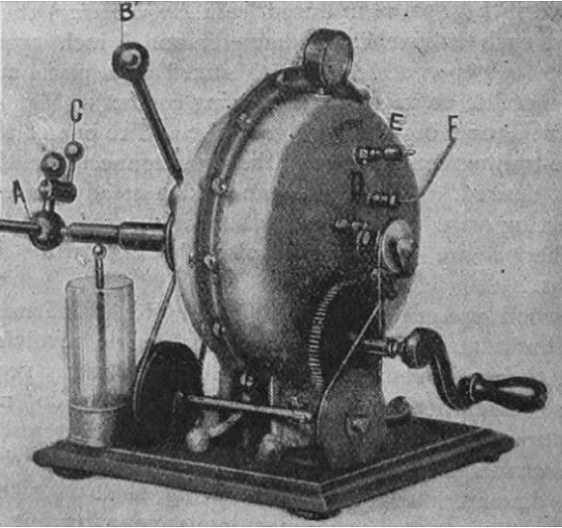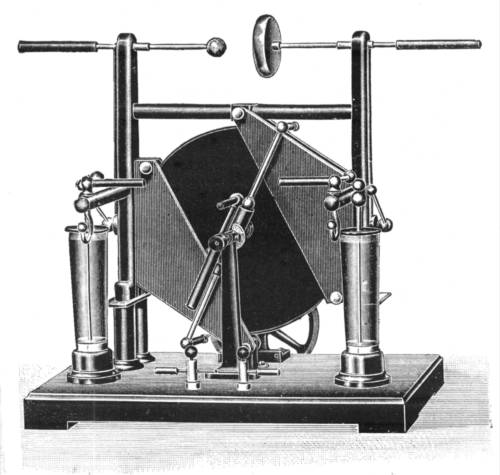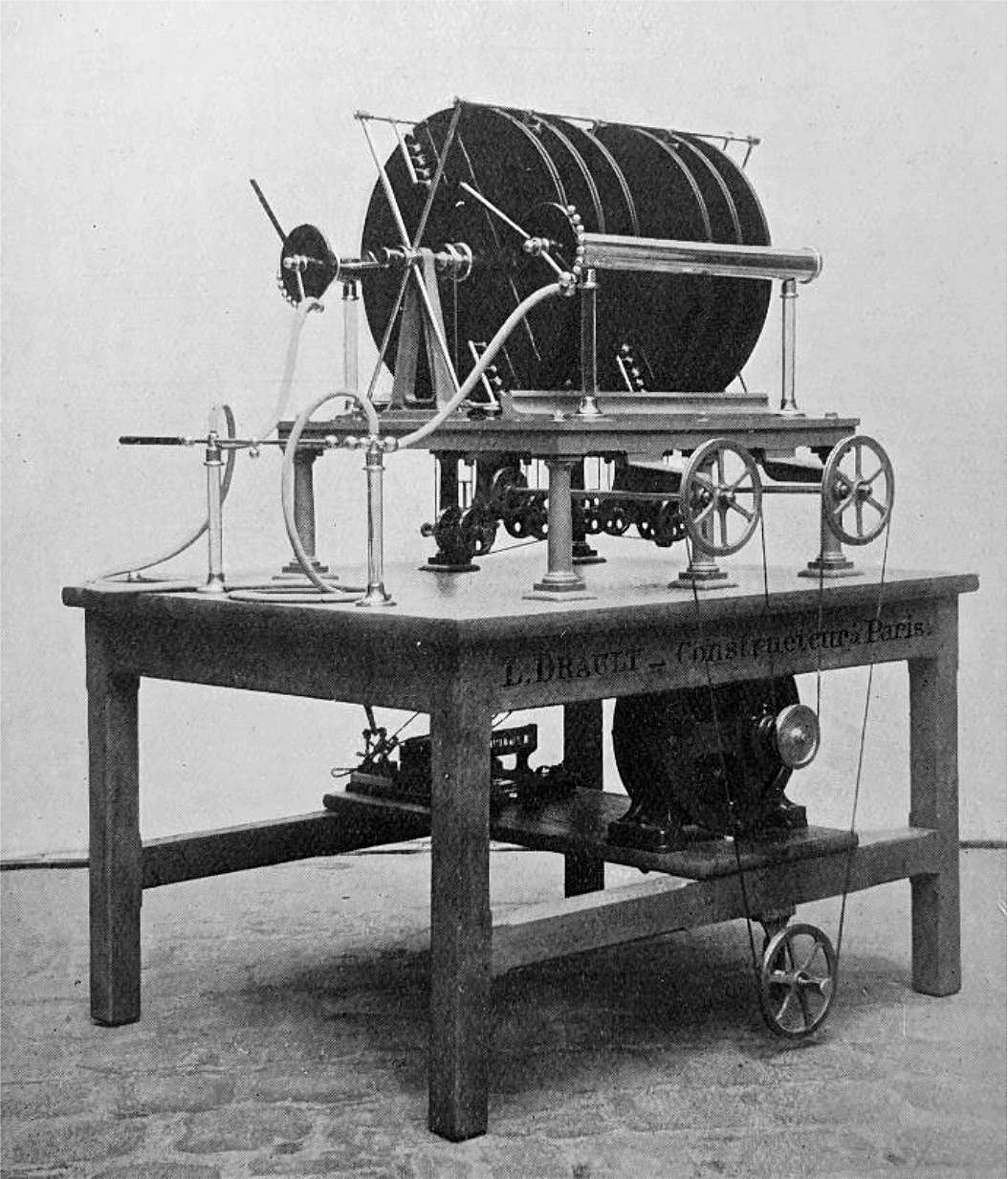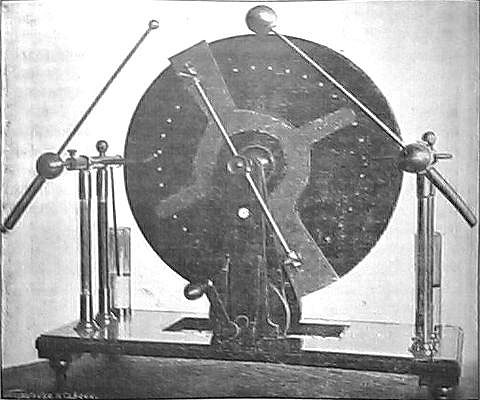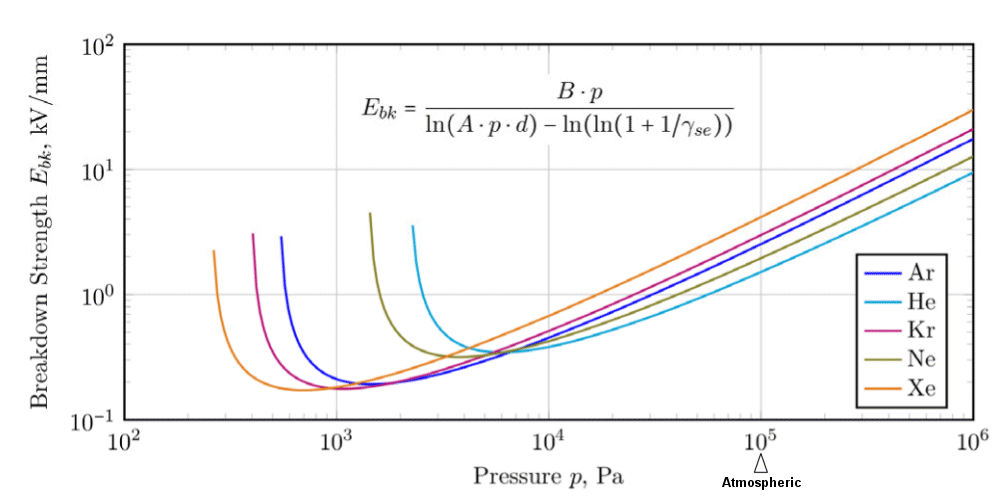The Wimshurst machine is certainly the best-known of the rotary generators. It was developed between 1880 and 1883 by British inventor James Wimshurst (1832–1903). There is more info on James on Graces Guide
This machine was built by Harvey & Peak of London.
When Wilhelm Röentgen (1845–1923) announced his discovery of X-rays in 1895, and their utility became obvious, sources of high DC voltage were required to run the tubes. High voltage transformrs and mechanical rectifiers wre one method, but the distribution of mains electricity had barely begun. Induction coils could be used but were noisy, and expensive, the secondary required many turns of wire. Wimshurst machines gave a viable alternative, and unlike the other two methods could be hand-cranked, though given the long exposures requied for early X-ray work, it was probably rather arduous.
Edward George Spencer-Churchill (1876–1964) was a first cousin of Winston Churchill and an undergraduate at Magdalen College, Oxford where he experimented with X-rays in 1898. He purchased a Jackson X-ray tube, a Wimshurst machine, and a fluorescent screen.
Spencer-Churchill was taking images of the limbs of his friends for amusement, there then being no realisation that X-rays caused cumulative tissue damage. On the outbreak of the Boer War in 1899, he became a Lieutenant in the Grenadier Guards and his apparatus was taken to South Africa, where it was used to assist the Royal Army Medical Corps to locate bullets, shrapnel, or fractures in wounded soldiers. It used there between 1900 and 1902, and survived to be presented to the Museum in 1939 by Spencer-Churchill himself.
There is a page on the Wimshurst machine on the de Queiroz website.
The Wimshurst Machine has a Wikipedia page.





